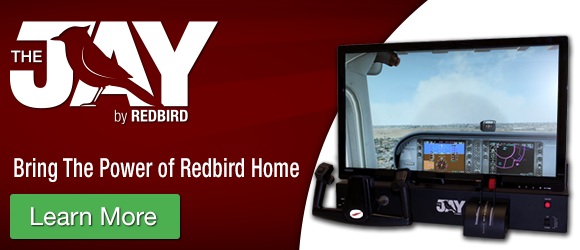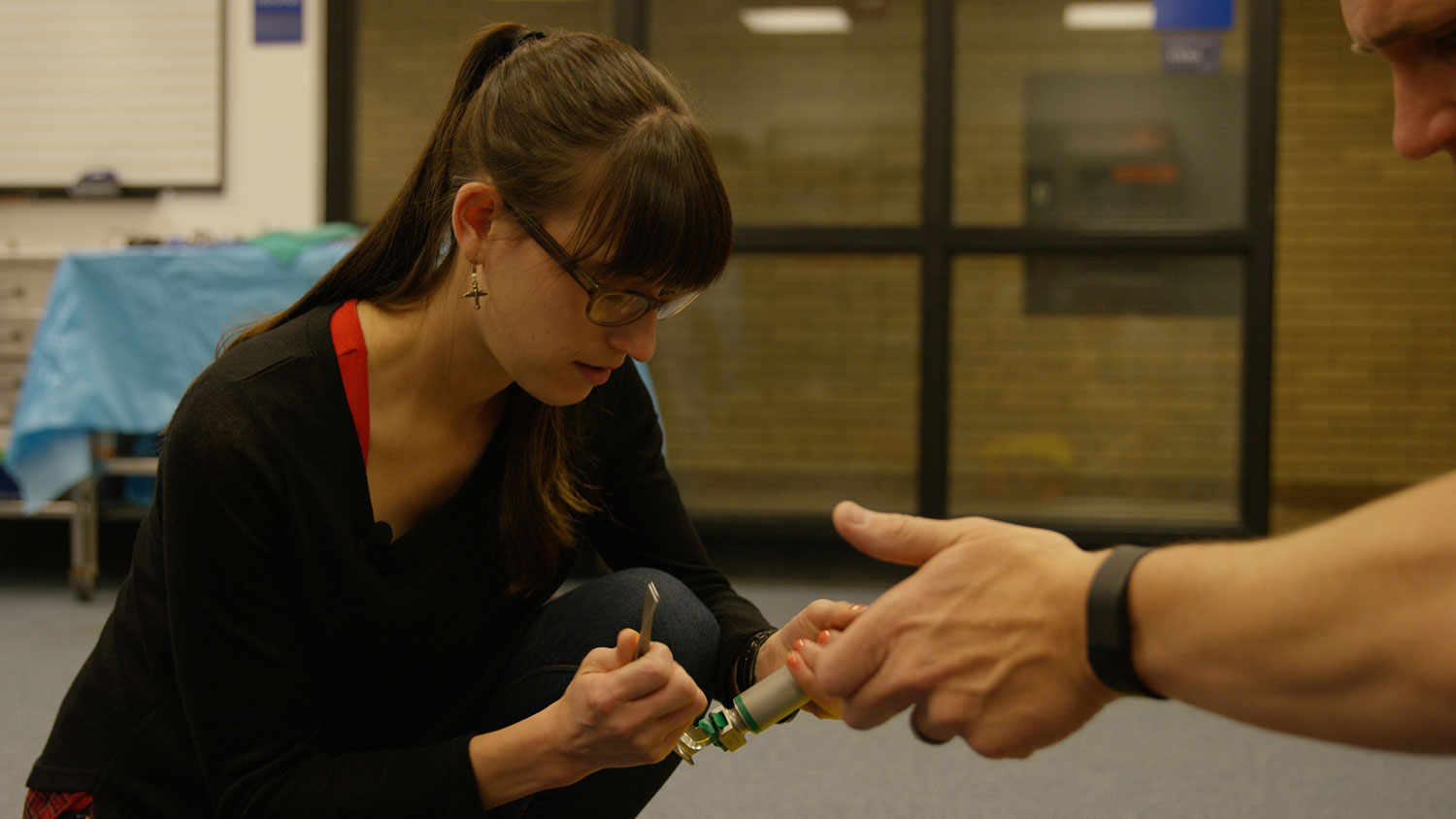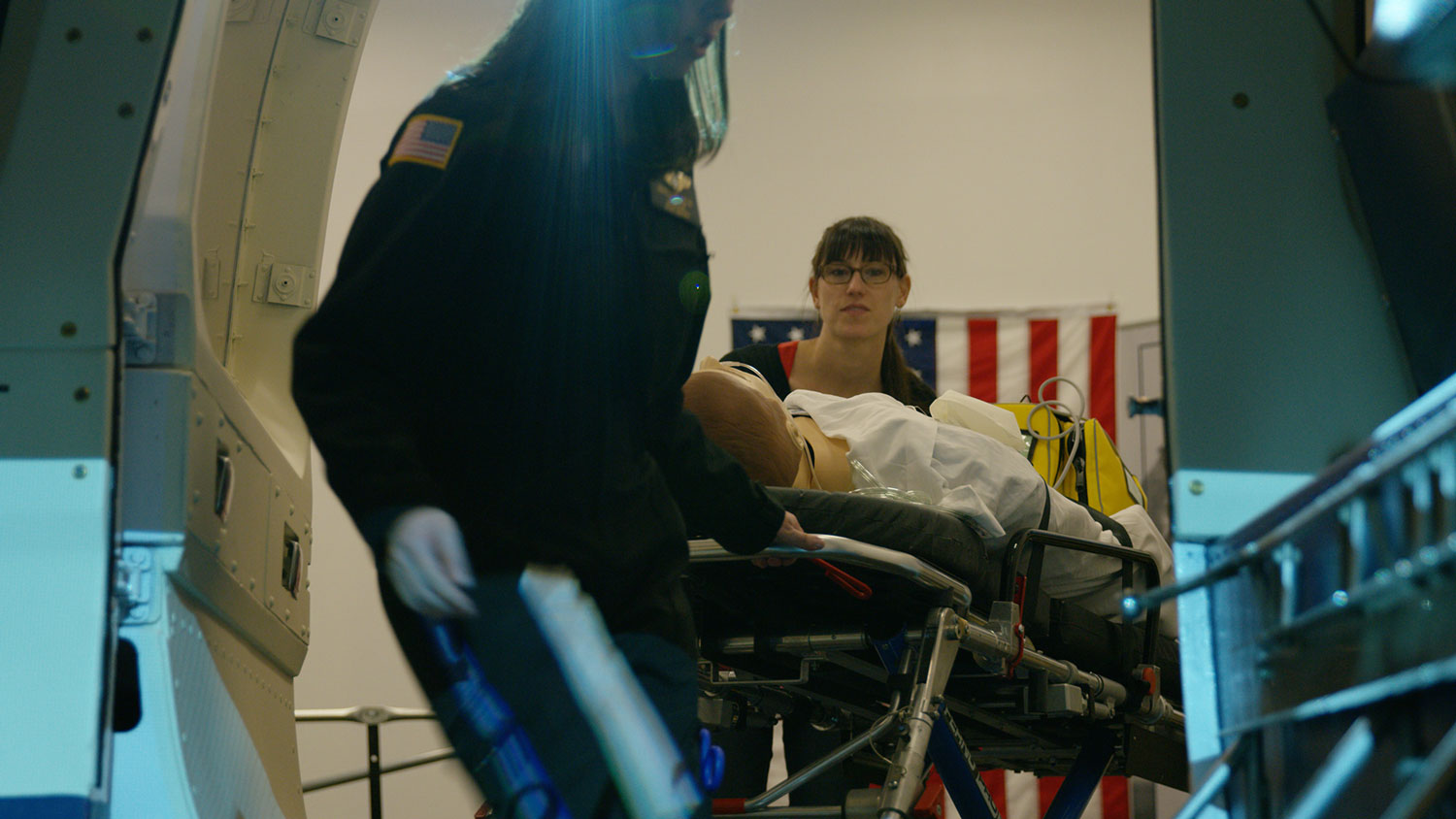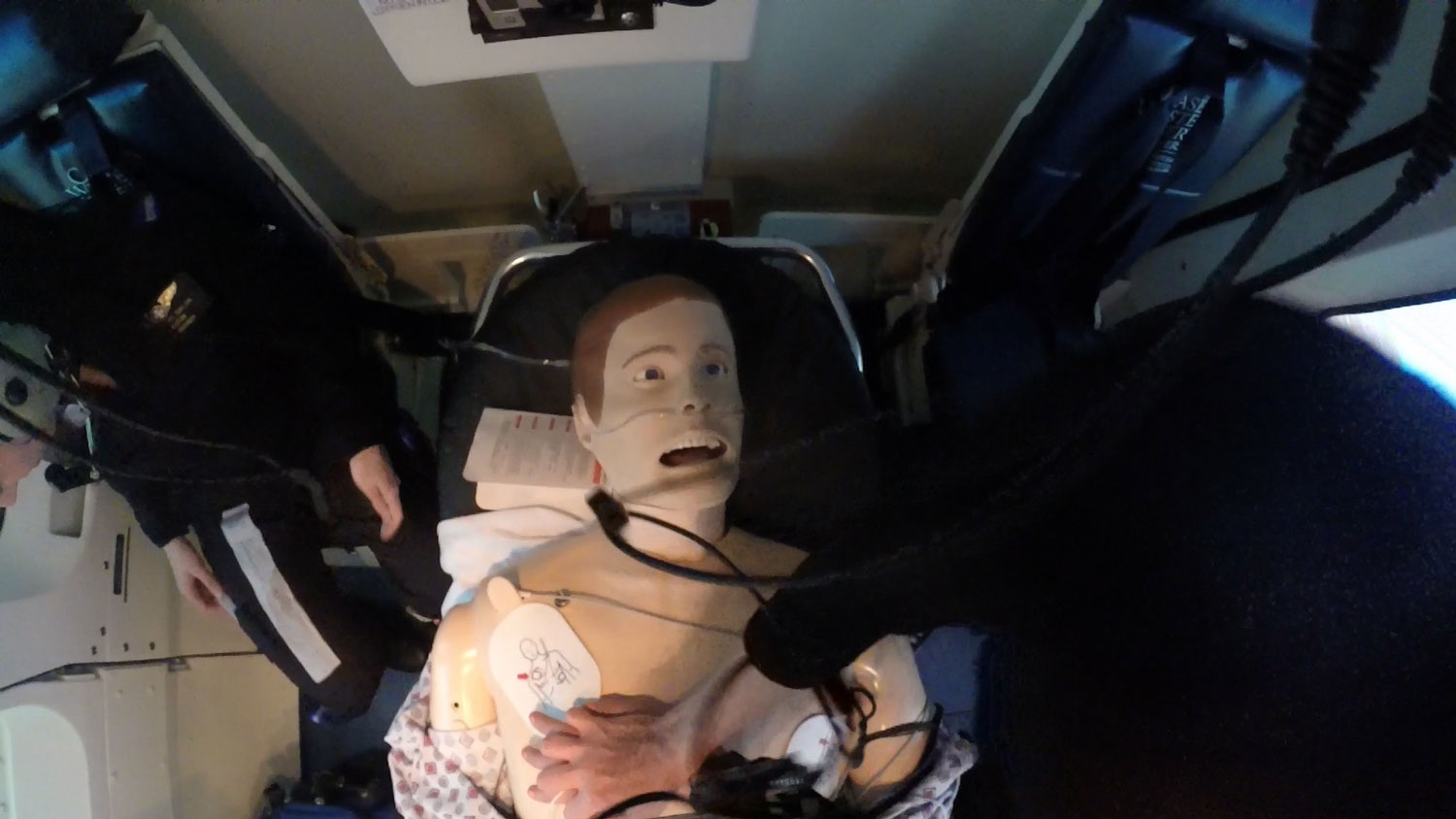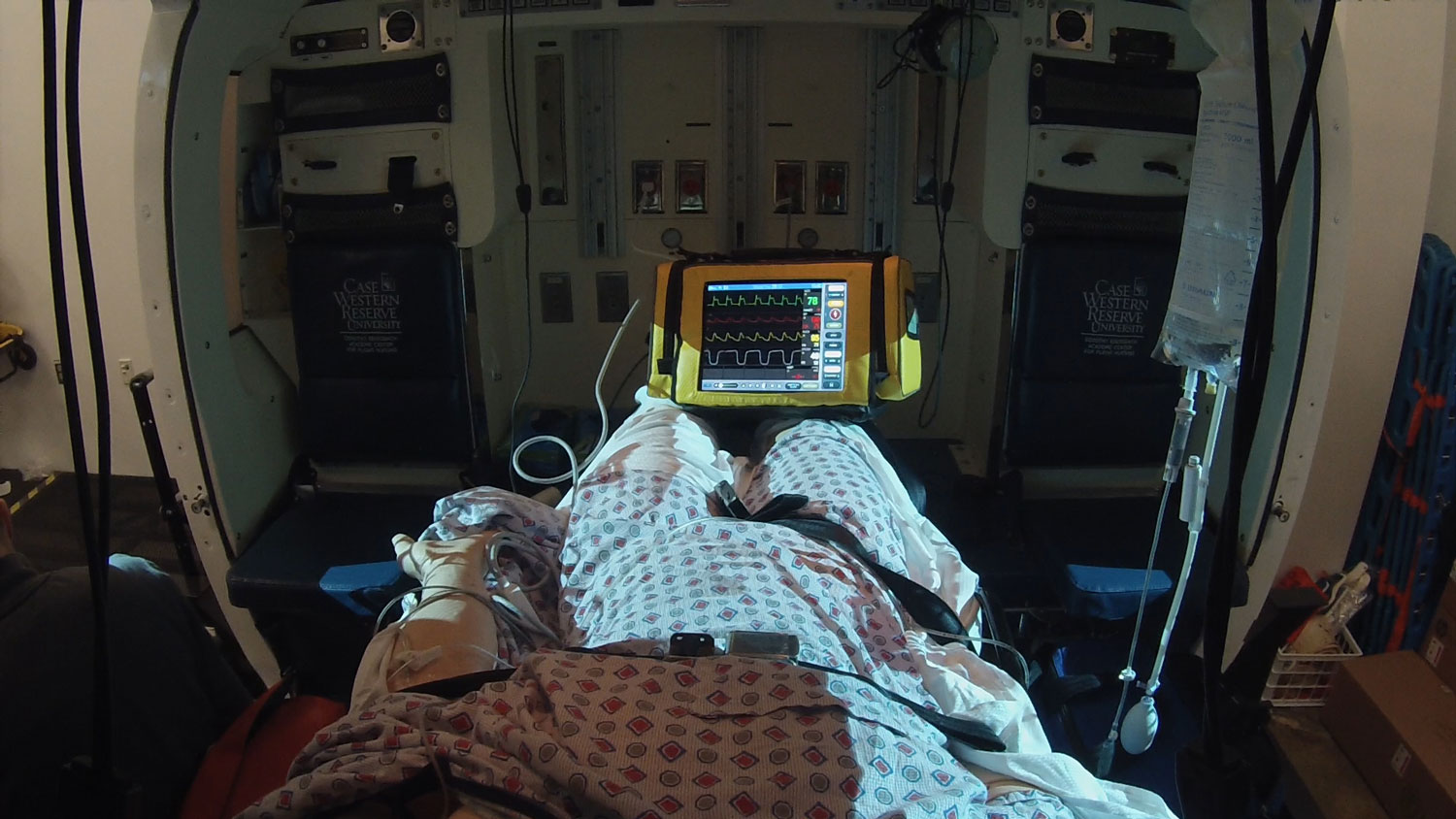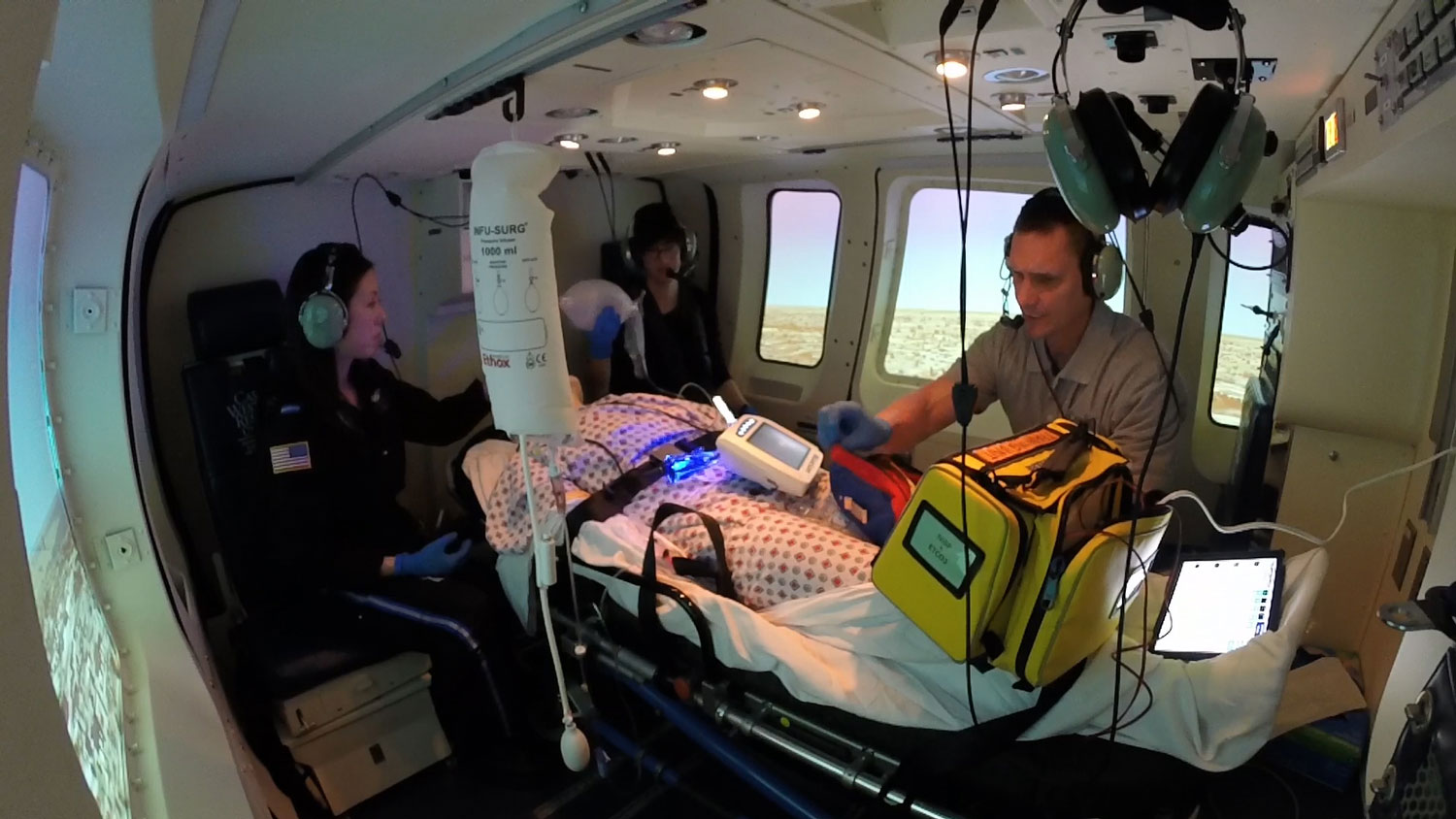Our visit to Cleveland was a little crazy (with two cancelled flights), a little overwhelming, and incredibly interesting! After arriving a week later than planned, we finally made it to Case Western Reserve University in Cleveland. The University’s nursing program is one of the best in the country. They have a one-of-a-kind full motion Redbird simulator that is used to train flight nurses and provide them real-world practice in the unforgiving and confined environment of a Med Evac Helicopter. The simulator is also used for research that will continue to pave the way for the future of flight nurse training.
This visit, I stepped completely out of my comfort zone to learn about the world of flight nursing and moved from the front of the cockpit to the back where there are nurses working to save a life.
Before we went into the simulator to work through a scenario, I got to take a look at a flight nurse’s medical bag and learn some basic procedures. The flight bag has to contain everything you would need to treat a patient during transport. It was interesting – so many tools and apparatus in various bags and compartments. Afterwards, I don’t think I could remember what any of it was and can see why it is important for a flight to nurse to be intimately familiar with their equipment and to make sure they have it stocked, restocked, and ready to go. That morning, I then learned some basics about CPR, ventricular fibrillation, and endotracheal intubation, as I was told it may be needed when I get into the Med Evac simulator. My instructor, and real life nurse practitioner and flight nurse, Dave, was great teaching it to me knowing that I came to him with no actual experience.
The work in the simulator was fun and unlike drama television, with real professionals, it wasn’t all chaos. In the sim, I became a part of the three-man crew. I was put into a scenario where a patient had recently suffered from a heart attack and needed to be transported from one hospital to another for surgery. During our 15 minute transport, the patient began to have complications from a medicine that was previously administered. What started off as a “routine” transport became busy as we worked to get his heart rate back to normal through chest compressions and then ventricular fibrillation.
It was an incredible day and I know that I didn’t even scratch the surface of what the students in this flight nursing program go through. Becoming a flight nurse is no easy task. Typically, you need to have 3 to 5 years of experience as an ICU or emergency room nurse and then additional training and certifications before even considering it. Flight nurses are truly amazing… they have a strong desire to serve, remain calm in less than ideal situations and environments, and embody an “I’m ready to go” mentality.
Often times, people are nervous enough as a patient in a hospital, but can you imagine what it must be like to be a patient being transported by helicopter?! The experience as the flight nurse was such a cool thing, but I know for sure that I don’t think I want to have the real world experience of needing to be the passenger patient!
